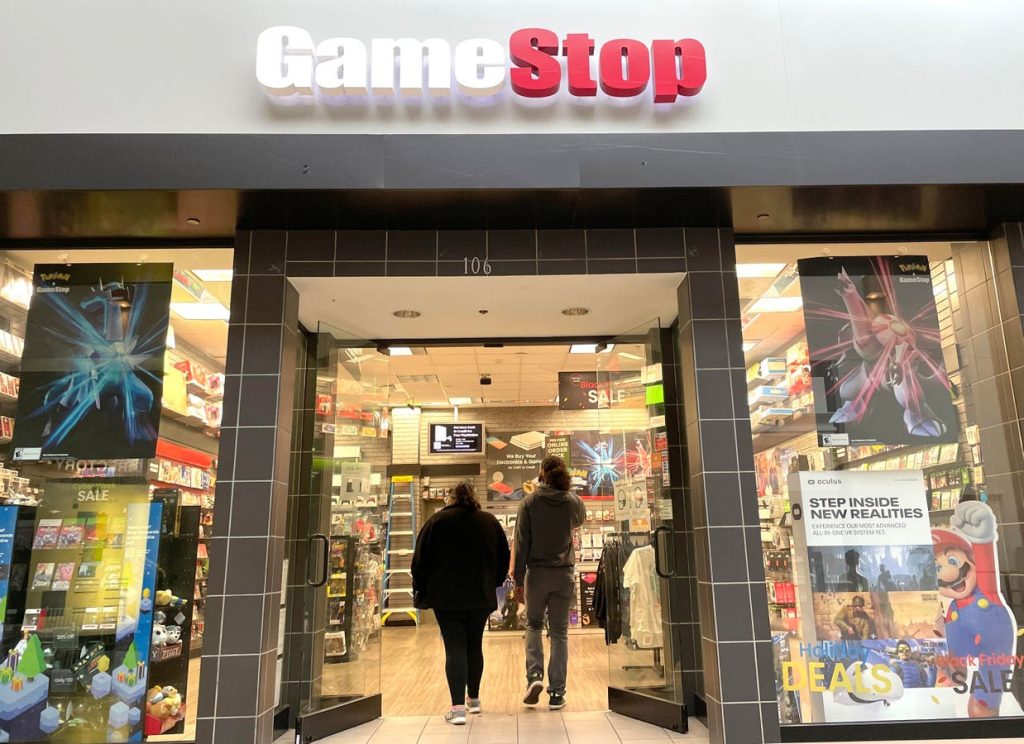GameStop’s recent financial performance reveals a company grappling with declining revenue and profitability, despite a substantial cash infusion from stock sales. While the stock price has seen a recent uptick, the underlying fundamentals remain a concern. The company’s third-quarter results, released without the customary conference call, highlighted a continuing trend of revenue contraction and operational losses, albeit at a slower pace than previous periods. GameStop’s reliance on interest income from its substantial cash reserves masks the true extent of its operational struggles, raising questions about long-term sustainability. The current valuation, while seemingly high based on traditional metrics, is somewhat mitigated by the significant cash holdings, creating a complex picture for investors.
A historical overview of GameStop’s financials reveals a consistent decline in revenue since fiscal 2019, even preceding the impact of the COVID-19 pandemic. From a peak of $8.5 billion in fiscal 2018, revenue is projected to plummet to approximately $4 billion in fiscal 2025, representing a staggering 51% decrease over seven years. This persistent downward trend reflects the challenges faced by the company in adapting to evolving consumer preferences and the shift towards digital distribution in the gaming industry. While fiscal 2022 saw a temporary revenue rebound, this proved to be an anomaly, with subsequent years continuing the downward trajectory. The lack of a clear strategy to reverse this trend raises concerns about the company’s long-term viability.
Furthermore, GameStop’s cash flow performance mirrors the revenue decline. While operating cash flow has fluctuated between positive and negative territory in recent years, the overall trend is negative, indicating a struggle to generate cash from its core operations. The company’s reliance on reducing inventories and increasing accounts payable to bolster short-term cash flow is not a sustainable long-term strategy. These measures essentially represent delaying payments and reducing investment in inventory, which can ultimately hinder future growth. Free cash flow, a crucial metric for assessing a company’s ability to reinvest in its business and return value to shareholders, has also been consistently negative, further highlighting the underlying financial fragility.
A significant development in GameStop’s financial story has been the substantial strengthening of its balance sheet through multiple stock offerings in 2024. Raising approximately $3.45 billion by selling 140 million shares, the company has amassed a sizeable cash reserve of over $4.6 billion. This cash infusion has significantly reduced the company’s debt, resulting in a net cash position that represents a substantial portion of its market capitalization. While this provides a cushion against short-term losses, it doesn’t address the fundamental issue of declining revenue and profitability. The long-term value of the company hinges on its ability to effectively deploy this cash to revitalize its business and generate sustainable growth.
However, a closer examination of GameStop’s recent profitability reveals a reliance on interest income generated by its substantial cash holdings. The reported net income in the fiscal third quarter was largely driven by interest income, masking the underlying operating losses. This accounting artifact creates a misleading impression of profitability, as the core business continues to struggle. As interest rates decline, the contribution from interest income is likely to diminish, further exposing the underlying operational challenges. This dependence on non-operating income raises questions about the sustainability of the company’s reported profits and the true health of its core business.
Evaluating GameStop’s valuation presents a complex picture. While traditional metrics such as the market cap to revenue ratio suggest an expensive valuation, the substantial cash holdings complicate the analysis. When considering the net cash position, the enterprise value to revenue ratio appears more reasonable, although still higher than historical levels. This disparity highlights the importance of considering the cash balance when assessing the company’s value. However, the fundamental question remains: can GameStop effectively leverage its cash reserves to reverse the declining revenue trend and justify its current valuation? The answer to this question will ultimately determine the long-term fate of the company and its investors. Finally, technical indicators such as the Relative Strength Index suggest that the stock may be currently overbought, hinting at a potential price correction in the near term. This further emphasizes the need for cautious evaluation and a focus on the underlying fundamentals rather than short-term price movements.

